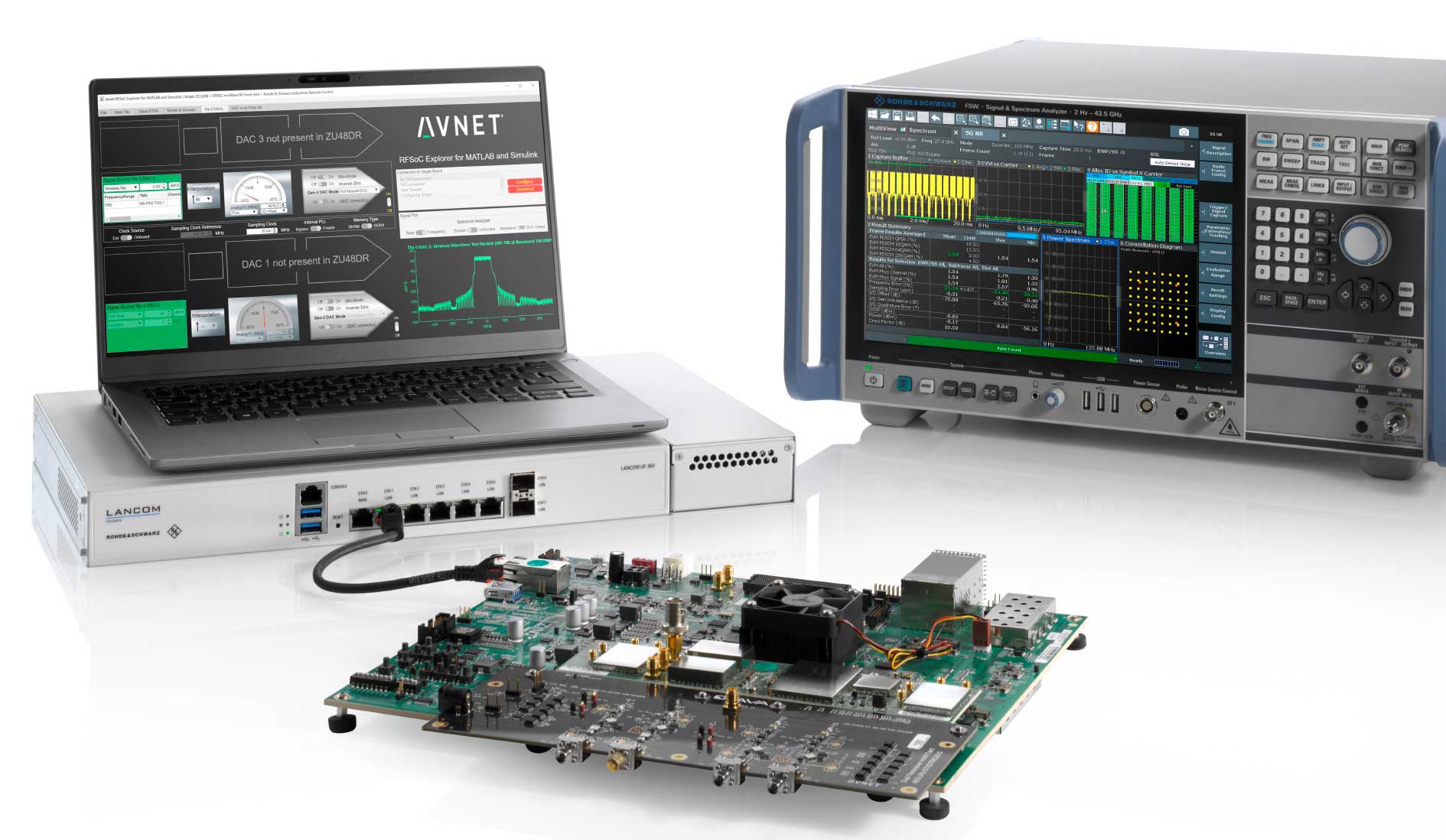Applications – or apps – were the inflexion point that gave birth to the smartphone. The concept of an app store is simple, but it rests entirely on access to a common hardware platform, enabling third parties to develop and deploy new functions for existing hardware. This blurs the line between hardware and software, and it is happening in other areas. It demonstrates the power of software, and how the line between software and hardware becomes moot when the overall function is what really matters.
The line is also blurring in embedded development. Integrated development environments for microcontrollers typically include in-circuit debug support. This interface monitors the embedded code as it executes on a hardware platform. That hardware might be a development kit, but it could also be a prototype. By necessity, the prototype needs to be ready before the code can be executed.
In-circuit emulators, now less common than in the past, were cycle-accurate systems that could operate at full speed. They would physically plug into a board, with the processor plugged into the test probe. Advances in in-circuit debug have made the emulator redundant, but one of the main advantages of an in-circuit emulator was its speed. Sometimes, bugs only appear when the system is running at full speed, so it could be a powerful debug tool.
This is a good example of how emulation is used in development. It isn’t a huge leap to move from emulation to simulation, where more of the hardware being developed or tested only exists in the software domain. Virtual prototyping has long been discussed and surely continues to divide opinion. But it is undeniable that advances in compute performance are making virtual prototyping more viable by simulating more of a system during development.
The changing shape of development
SPICE (Simulation Program with Integrated Circuit Emphasis) is one of the main tools used in hardware simulation. This open-source tool was conceived with integrated circuits in mind. It might be more accurate to call it a modeling tool, because it employs a lot of calculation to predict how non-linear integrated circuits will operate.
Various versions of SPICE now exist, with some semiconductor manufacturers using it as a basis for their own simulation tools. Others have taken a SPICE-like approach to developing simulation tools.
There are various examples of this, including Infineon Designer, which is an online SPICE simulator based on TINACloud that covers both analog and digital circuit simulation. The TINACloud circuit analyzer from DesignSoft also has an offline (downloaded) version.
Microchip’s MPLAB Mindi Analog Simulator is also an offline tool. It uses a SIMetrix/SIMPLIS simulation environment with support for SPICE. Microchip has added model files for its own products to complement the generic models included.
Many semiconductor manufactures offer standalone simulation tools for specific functions. An example here is ST PowerStudio from STMicroelectronics. This is a dynamic electro-thermal simulation tool designed for ST’s power devices. It combines power and thermal analysis to predict device performance. It can do this because the tool includes precise models for ST’s devices. Simulation provides an accurate estimation of losses, and junction and case temperatures.
Moving from development to prototyping
Modeling in the virtual domain can provide significant advantages in terms of access to hardware, development time and reiterative reconfiguration. The next step would likely be to move the virtual design to real hardware. Here, the industry is also providing innovative alternatives.
Engineers can now evaluate hardware remotely over an Internet connection. These remote laboratories are becoming more popular for many reasons. For example, Avnet now uses remote test equipment when working with customers to develop 5G solutions.

One reason is to make the equipment more accessible to engineers anywhere and anytime. A second reason is to lower the cost of development. The test equipment used in 5G development is expensive to purchase but accessing it remotely on a time-share basis lowers this cost significantly.
Another example of remote access to real hardware comes from Renesas and its Lab on a Cloud initiative. This is a GUI-based interface to real evaluation boards located in a lab, accessed remotely over an internet connection. Part of the intention is to give customers access to the boards before they receive them. Renesas is using this to help customers evaluate new technologies and solutions. For example, through Lab on a Cloud, engineers can learn about image processing using embedded artificial intelligence by remotely accessing a board based on the RZ/A2M MPU.
Part of the challenge with prototyping is configuration. Electronic products are often intended to operate systemically as part of a larger system. To prototype a new device, other parts of the overall system may also be needed.
This is where something like the Digilent digital discovery embedded development companion may be used. This small device combines the functionality of a logic analyzer and pattern generator along with programmable I/O. It also features a programmable power supply and digital bus analyzer for both serial and parallel protocols. It and other platforms like it can be configured to provide the right test stimuli and capture the results when evaluating a new design. That design may be a board, but it could equally exist only in the virtual domain.
Can simulation replace hardware?
Simulation works because physics makes actions and reactions predictable. With more processing power available, simulations can become more fine-grained. The compromise has previously included balancing the time it takes to simulate a physical device against the accuracy of the results. Faster processors and access to powerful servers constantly change this balance.
At some point, it may be possible to simulate everything. This defines multi-physics co-simulation, allowing mechanical and electrical systems to be simulated simultaneously and interdependently. It makes use of non-linear finite element analysis, really a technique that is only feasible thanks to hyper-scale computing.
Ultimately, the simulation may become so advanced that only specific functions need to exist in the real world until all development and verification work has been carried out. Verification is perhaps the last part of the puzzle. Typically, there will be many possible operating scenarios that could exist for a product, particularly one that can be updated using over-the-air technology. Testing each of these scenarios would be much quicker and more convenient if they could be simulated in the virtual domain.
Are digital twins the new HIL?
Mixing the real and virtual worlds is becoming more common. The current interest around digital twins is proof of this. A digital twin is an exact (or very close) replica of a real-world device that exists only in the virtual domain. The “twin” element refers to the way both operate in the same way. If one changes, so does the other.
Digital twins allow ”what if” scenarios to be played out in a safe environment before changes are applied in the real world. Equally, a digital twin’s status would be updated if the real-world device changes.
Functionally, a digital twin could replace real hardware in the design, test and verification phases of development. This could make the digital twin an alternative to using hardware in the loop (HIL). The scenario has been discussed for several years, since before the phrase ”digital twin” was coined.
The validity of relying on a digital twin instead of HIL divides the engineering community and often the debate settles around the quality of the model. In many applications, the quality of the data coming from the real world will also be fundamental. In this respect, quality should extend to how long it takes the data to be sent and to arrive. Latency in a real-time application will be critical, but faster networking technologies such as WiFi 6 and 5G may remove that barrier.
Take the leap into virtual design
Working online is becoming the norm. Even many integrated development environments (IDEs) are now available predominantly through a web browser. Design Hub is a recent innovation from Avnet that leverages an online engineering platform that can automate design and consolidate parts libraries.
The Design Hub also includes access to Avnet’s reference designs and provides an easy route to many of the design and simulation tools offered by Avnet’s supplier partners. Engineers can begin with an existing reference design to jump-start their own product development. It supports the entire design cycle: from block diagram, to schematic, to PCB, and creating a complete bill of materials.
The future of design is virtual
Digitization, the process of converting the analog world into a digital representation, continues. The further down this road we travel, the easier it becomes to manipulate and influence the real world from the digital domain.
It seems inevitable and logical to move design deeper into the digital domain. The word “virtual” may carry some bias toward inferior or compromised. But improvements in multi-physics modeling, enabled by more powerful computers and, crucially, the introduction of artificial intelligence, suggest that any prejudice toward the virtual domain should disappear soon.
Couple these advancements with improvements in design automation and the results will be amazing.
Authored Article by: Philip Ling, Avnet








